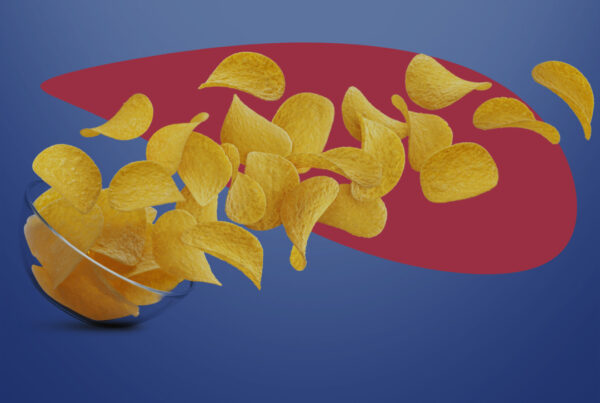You must have heard that fibre is good, and you should eat more fibre throughout the day. But do you know why fibre is so good for your health?
Fibre is a carbohydrate found only in plant-based foods – fruits, vegetables, legumes, grains, and nuts. But unlike other carbohydrates like sugars that get absorbed into your bloodstream, fibre passes through your digestive tracts. So even though your body doesn’t absorb fibre, you get a lot out of them.
Fibre is commonly classified into two different types: Soluble and Insoluble. Each of them plays an essential role in helping to prevent disease and promote good health.
Soluble Fibre
Soluble fibre absorbs water and turns into a gel-like substance as it goes through our digestive systems. This helps slow digestion and softens your stool, so it goes through your gastrointestinal tract more easily. Foods rich in this type of fibre include oatmeal, legumes, broccoli, nuts, beans, apples, and blueberries.
Insoluble Fibre
Often referred to as "roughage" because it does not dissolve in water. Instead, it holds onto water, which helps produce softer, bulkier stools to help regulate bowel movements. Foods rich in this type of fibre include whole-grain foods, brown rice, nuts, seeds, and colourful fruits and veggies.
Health Benefits of Fibre
Protects Your Heart

Soluble fibre attaches to cholesterol particles inside your digestive system and flushes them out of your body, helping to lower your overall cholesterol levels and reduce your risk of heart disease.
Prevents Diabetes

Soluble fibre does not contribute to blood sugar spikes in your body which can increase your risk of developing type 2 diabetes and heart disease. This is because soluble fibre is poorly absorbed. It is even possible that soluble fibre can help you maintain control of your diabetes, whether you have type 1 or type 2 diabetes.
Takes Care of Your Bowel Movements

As fibre passes through the stomach and intestines, it absorbs water, increases the bulk of the stool, and softens the stool as it passes through the body. This helps to maintain regularity while also reducing constipation.
Manages Metabolic syndrome

Diets high in fibre may play a critical role in lowering the risk of developing metabolic syndrome, which includes hyperinsulinemia, hyperglycemia, low HDL cholesterol levels, obesity or overweight, and high blood pressure. Heart disease and diabetes are known to be associated with metabolic syndrome, which is a high-risk factor.
Reduces Obesity

A high BMI is associated with an increased risk of type 2 diabetes, heart disease, cancer, and osteoarthritis, among other health problems. Limiting one's caloric intake is essential in treating this condition. Dietary fibre is extremely important in this regard because it produces a feeling of satiety, which allows the person to feel full for a longer period of time, resulting in a reduction in overall calorie consumption.
Daily Intake Recommendations
The recommended intake of dietary fibres in a 2000 calorie diet according to Academy of Nutrition and Dietetics is: -
25g per day for adult females
38g per day for adult males
After 50 years of age, this intake somewhat reduces and it comes around 21g for women and 30g for men. For pregnant and breastfeeding women, the fibre intake should be a minimum of 28g per day.
How to Increase Your Fibre Consumption

- Slowly incorporate more fibre into your diet. Cramping, bloating, and constipation may result from consuming too much fibre at once.
- Consume fruits and vegetables with their skins on because the skins contain a significant amount of fibre.
- Add salads or soups in your everyday meals.
- Rather than enriched flour, look for products that have whole grains listed as the first ingredient. Whole wheat flour, for example, is a whole grain, whereas white wheat flour is a refined grain.
- Multigrain bread and pasta should be substituted for white bread.
- If you are unable to meet your daily fibre requirements, you should consider taking fibre supplements.
The Bottom Line

Dietary fibre has a wide range of health benefits, but consuming an excessive amount of it too quickly can result in intestinal gas, abdominal bloating, and cramps. Increase the amount of fibre in your diet gradually over a period of several weeks. This provides time for the natural bacteria in your digestive system to adjust to the new environment and function properly.
Also, make sure to drink plenty of water, as fibre works best when it is able to absorb water.
References
Champ, M., Langkilde, A. M., Brouns, F., Kettlitz, B., & Collet, Y. L. B. (2003). Advances in dietary fibre characterisation. 1. Definition of dietary fibre, physiological relevance, health benefits and analytical aspects. Nutrition Research Reviews, 16(01), 71. https://doi.org/10.1079/nrr200254
Campbel, A. P. (2001). Health Benefits of Dietary Fiber for People With Diabetes. The Diabetes Educator, 27(4), 511–514. https://doi.org/10.1177/014572170102700406
Lattimer, J. M., & Haub, M. D. (2010). Effects of Dietary Fiber and Its Components on Metabolic Health. Nutrients, 2(12), 1266–1289. https://doi.org/10.3390/nu2121266





